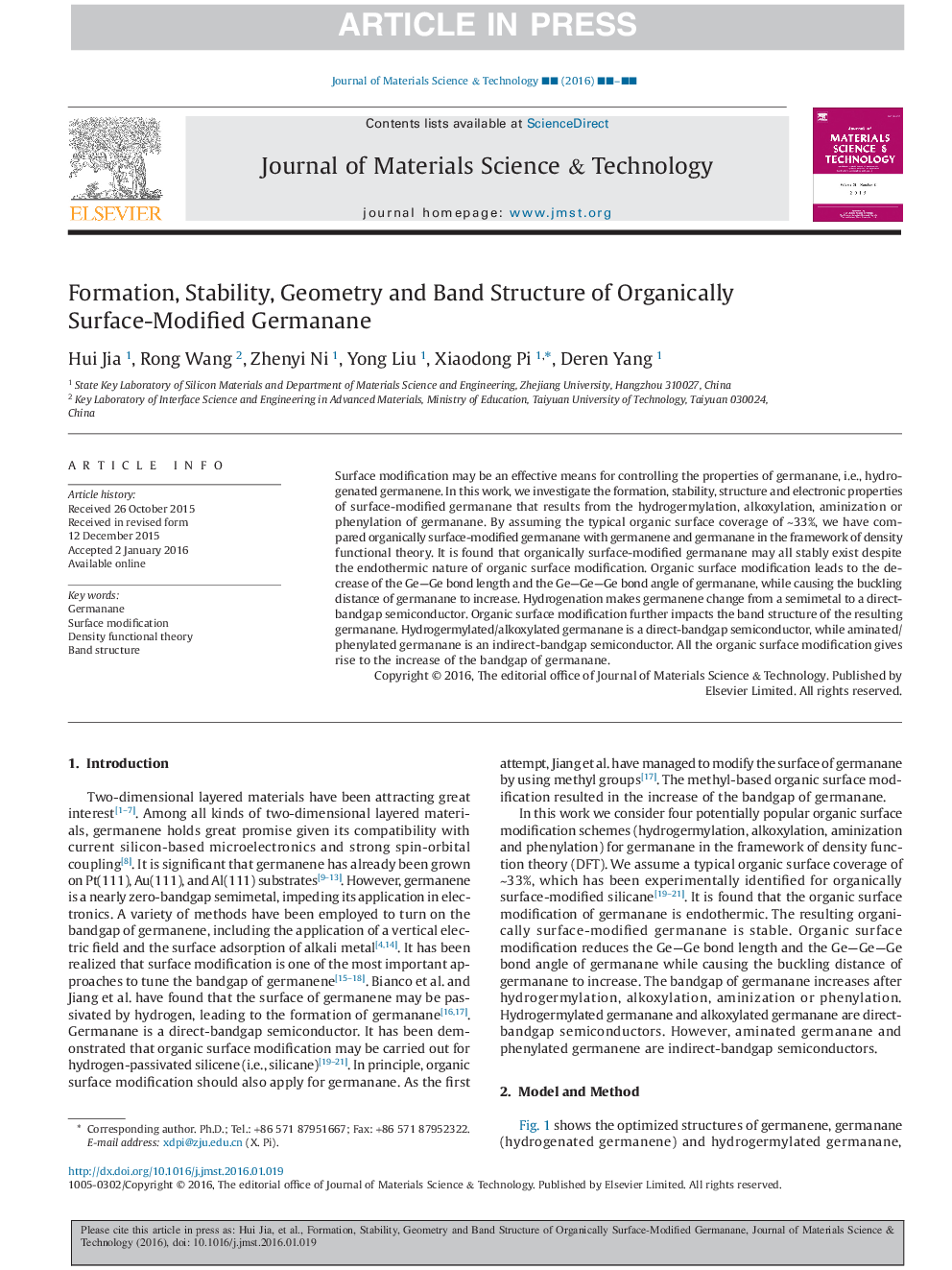| Article ID | Journal | Published Year | Pages | File Type |
|---|---|---|---|---|
| 5451543 | Journal of Materials Science & Technology | 2017 | 6 Pages |
Abstract
Surface modification may be an effective means for controlling the properties of germanane, i.e., hydrogenated germanene. In this work, we investigate the formation, stability, structure and electronic properties of surface-modified germanane that results from the hydrogermylation, alkoxylation, aminization or phenylation of germanane. By assuming the typical organic surface coverage of ~33%, we have compared organically surface-modified germanane with germanene and germanane in the framework of density functional theory. It is found that organically surface-modified germanane may all stably exist despite the endothermic nature of organic surface modification. Organic surface modification leads to the decrease of the GeGe bond length and the GeGeGe bond angle of germanane, while causing the buckling distance of germanane to increase. Hydrogenation makes germanene change from a semimetal to a direct-bandgap semiconductor. Organic surface modification further impacts the band structure of the resulting germanane. Hydrogermylated/alkoxylated germanane is a direct-bandgap semiconductor, while aminated/phenylated germanane is an indirect-bandgap semiconductor. All the organic surface modification gives rise to the increase of the bandgap of germanane.
Related Topics
Physical Sciences and Engineering
Materials Science
Materials Chemistry
Authors
Hui Jia, Rong Wang, Zhenyi Ni, Yong Liu, Xiaodong Pi, Deren Yang,
